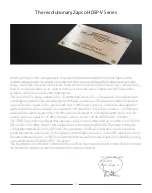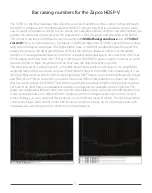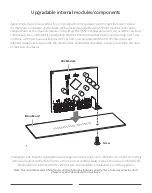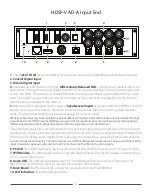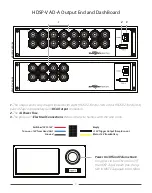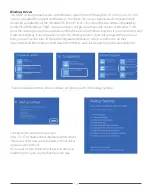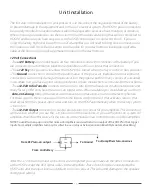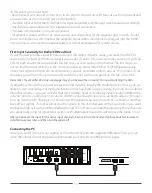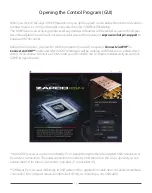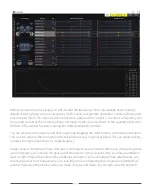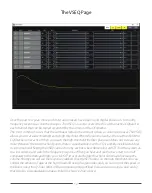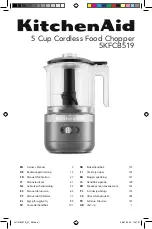
3. Delay and Polarity
: Signal delay allows you to adjust the arrival time of each channel so that it will
sound as though you are dead center in the car, even though you are likely sitting far to one side or the
other. All speakers in a system must be “in phase” for tuning to be effective. This means they must be of
the same polarity (all moving the same direction at the same time). If a speaker is out of phase with the
rest of the system you can change its polarity in the GUI to the right of the delay adjustments.
4. Mute/Solo
: These buttons allow you to listen to individual speakers or groups of speakers, as needed
during fine tuning. If you Right Click on any channel’s mute button you have the option to Mute All or
Unmute All.
5. Output Level
: Here you can adjust for any channels whose output level is not as needed for the
correct overall sound.
6. Equalizer
: This is the section where you will do the fine tuning. We will discuss more about equalizing
later in the system setup. The Equalizer is on the Main page, so you can have all your other settings
handy for fine adjustments as needed during the equalization procedure.
The Navigation Bar
At the top of the Main page is the navigation bar. On the right side the navigation bar are the links to
the function pages. At the left side you will find the FILE menu and the LOAD/SAVE menu.
FILE Menu
: The file holds the seseveral functions below.
WiFi Management
: Your HDSP processor can be controlled by PC or laptop through either the supplied
USB connection or by wireless connection. The initial connection must be by USB, then once the GUI is
opened you can enable the WiFi for future connections (be sure to connect the WiFi dongle at the
round Mini DIN WiFi port on the processors input side).
ZapcoACP is your access point. The default password is 12345678. You can change the password by
highlighting the current password and clicking SET.
18

